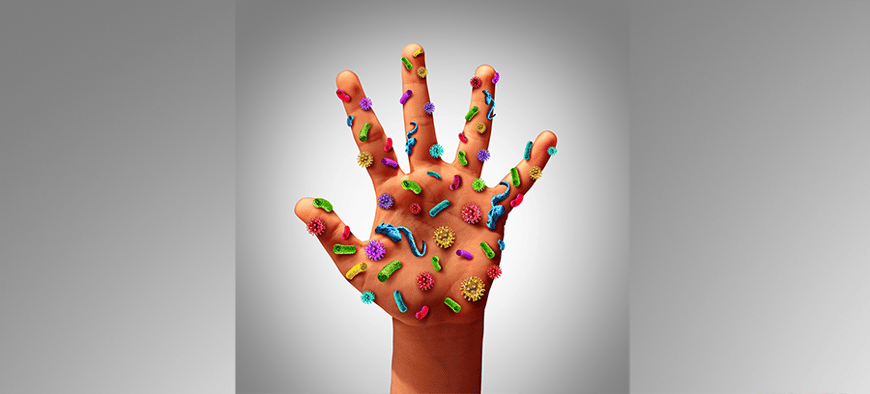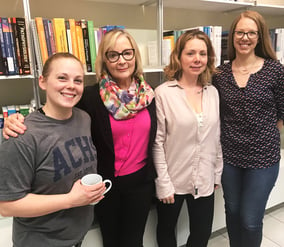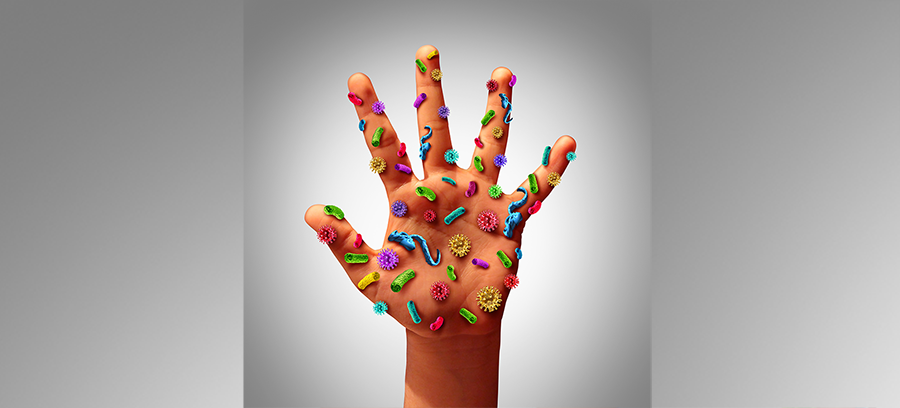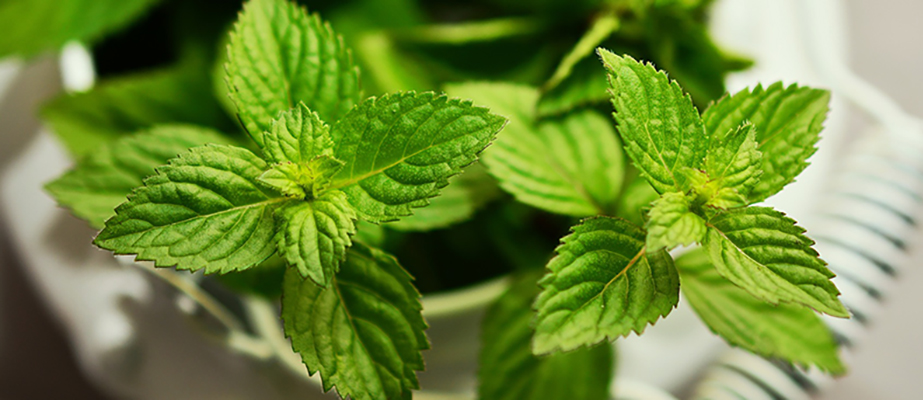
Image Copyright: Alena Ozerova / 123RF Stock Photo
By now, we all have our handwashing technique down and are practiced at the physical distancing dance. We have all mastered the method of using disinfecting wipes for every touched surface and hand sanitizer even though handwashing is best.
But what can we do when our stash of disinfecting wipes and hand cleanser /sanitizer is running low, and the supermarket shelves are empty? Or, if you are like me, a recycle reuse junkie and are fretting at filling up the landfill with all those packaged wipes, get started on DIY, disinfecting wipes, and hand sanitizer. It is so easy that even the kids can get involved, under your supervision, of course. (Looking for more ways to keep kids busy while stuck at home check out this great resource published last week by ACHS student services team Guide to Keeping Kids Busy and Learning while Engaging in Social Distancing.)
As an added plus, essential oils are a perfect combo with homemade hand sanitizer, disinfecting wipes. Though there is no essential oil or a blend of oils that are active against the Sars-Cov-2 virus there is some limited, in vitro, and in vivo, research that shows essential oil activity against other viruses. Just like bacteria, all viruses are not alike (some have an outer envelope, and some do not and will not react the same way on surfaces or in the body). [1]
The good news is essential oils pack a punch when cleansing and sanitizing surfaces and our hands. Did you know, for example, that herpes virus HSV-1 curls up its toes when exposed to eucalyptus Eucalyptus globulus essential oil and alcoholic extract? [2]
Other viruses, such as the norovirus that causes stomach flu is deactivated by the antiviral action of oregano Origanum vulgare oil and specifically its primary constituent carvacrol. [3]
Don't forget when you blend essential oils together, it can supercharge their action. Some research has demonstrated the synergistic power of blends of essential oils to deactivate some viruses. Despite the test being done in a petri-dish, antiviral activity was shown against H1N1, the flu virus, and HSV1 the herpes simplex virus. The essential oils used were eucalyptus Eucalyptus globulus CT cineol (leaf), cinnamon Cinnamomum zeylanicum CT cinnamaldehyde (bark), rosemary Rosmarinus officinalis CT cineol (leaf), and carrot seed Daucus carota CT carotol (seed). [4]
We adapted the blend below for your DIY projects and added two more to get you inspired. So, start blending and prepare your DIY hand sanitizer and sanitizing wipes supercharged with aromatherapy blends that will simultaneously support cleansing and your moods. Diffuse, while you clean, and best of all, inhale deeply.
Easy DIY Hand Sanitizer
- 2/3 cup Isopropyl alcohol 90% (rubbing alcohol)
- 1/3 cup aloe vera gel if you can get it ( you can substitute glycerine)
- Essential oil or an essential oil blend (see recipes below)
- A small or medium mixing bowl
- A spoon
- An empty container, preferably a bottle you can dispense from, a pump top is ideal
- A label
Here's how to make it:
Wash your hands and wipe down all surfaces. In a clean mixing bowl, stir the Isopropyl alcohol and aloe vera gel or glycerine together until well blended.
Add 8-10 drops of your chosen essential oils. Stir to incorporate.
Pour the homemade hand sanitizer into an empty spray or dispenser bottle. Label the bottle with hand sanitizer.
Easy DIY Sanitizing Wipes
- 2/3 cup Isopropyl alcohol 90% (rubbing alcohol)
- 1/3 cup boiled, cold water
- 1/3 cup white vinegar
- Essential oil or essential oil blend (see recipes below)
- A small or medium mixing bowl
- A spoon
- A spray bottle or mason jar with lid
- Cleaning cloths (you can even repurpose an old towel or tea towel just cut the fabric into squares 7 x 7 inches.
Here's how to make them:
Wash your hands and wipe down all surfaces. In a clean mixing bowl, stir the Isopropyl alcohol, water, and distilled vinegar together until well blended.
Add 8-10 drops of your chosen essential oils. Stir to incorporate. Use the mixture straight from a spray bottle. Clean the surface first, saturate the area with the spray, leave wet for 10 seconds then wipe with cleaning cloth. To reuse the cleaning cloths, wash in a hot wash. Alternatively, roll the cleaning cloths and pack them in a mason jar. Fill the mason jar with the mixture, put the lid on, and give it a good shake until all the cleaning cloths are saturated. Remove with washed hands as necessary and recycle cleaning cloths in a hot wash.
Three Must Make Aromatherapy Blends
To prepare these blends you will need extra bottles. A one ounce amber with a dropper or an orifice reducer is perfect. If you want to be precise and measure your blends it is best to use a disposable pipette. You can wash the pipette with alcohol between each oil so you don't contaminate your oils. Twenty drops is about 1 ml give or take the consistency of the oil. If that is all too technical just use the orifice reducer that comes with the bottle to dispense drop by drop. It is okay if it is not exact.
Sanitizing Blend
Cinnamon bark Cinnamomum zeylanicum CT cinnamaldehyde (bark): 40 drops
Eucalyptus smithii Eucalyptus smithii: 24 drops
Eucalyptus Eucalyptus globulus: 24 drops
Rosemary Rosmarinus officinalis CT cineol: 40 drops
Carrot seed Daucus carota CT carotol: 14 drops
Mix all the oils together in a clean bottle and shake well.
Add 60 drops of blend to either of the above DIY Sanitizing recipes.
Clearing Cleansing Blend
Bergamot Citrus aurantium var. Bergamia: 40 drops
Black pepper Piper nigrum: 15 drops
Clove Syzygium aromaticum: 10 drops
Oregano Origanum vulgare:10 drops
Elemi Canarium luzonicum: 10 drops
Summer Savory Satureja hortensis:10 drops
Mix all the oils together in a clean bottle and shake well.
Add 60 drops of blend to either of the above DIY Sanitizing recipes.
Spice is Nice Blend
Lavender Lavandula angustifolia: 40 drops
Cardamom Elettaria cardamomum: 30 drops
Cajeput Melaleuca leucadendron var. Cajuputi: 10 drops
Winter Savory Satureja montana: 8 drops
Niaouli Melaleuca quinquenervia ct. 1,8-Cineole: 5 drops
Mix all the oils together in a clean bottle and shake well.
Add 60 drops of blend to either of the above DIY Sanitizing recipes.
These products have been carefully selected for you here.
Wellness Support for COVID-19
We have received many questions about holistic protocols that may support the prevention of COVID-19. At this time, there is no definitive research on essential oils or botanicals with proven efficacy at this time. It is also important to remain aware of federal guidelines and safety best practices related to the use of natural products. We’ve specifically received several questions regarding the use of essential oils. We will share more information as it becomes available, and welcome crowd-sourcing information and research gathering via our Facebook page at https://www.facebook.com/ACHSedu/.
In the meantime, you can view ACHS’s guidance on essential oil safety and best practices by downloading our Aromatherapy Safety ebook by clicking here.
Free CE Courses
We have made many of our continuing education (CE) courses free for the time being to make sure everyone has access to these resources during this difficult time with COVID-19. Together we are amazingly strong, resilient and educated!
The free courses include:
Basic Blending with Essential Oils
Better Breathing the Natural Way
Introduction to Essential Oil Safety
Traditional Healing in the Kitchen
Full list of free courses here: https://learn.achs.edu/browse/covid19
Stay safe & healthy out there!
References
[1] Firquet, S., Beaujard, S., Lobert, P. E., Sané, F., Caloone, D., Izard, D., & Hober, D. (2015). Survival of Enveloped and Non-Enveloped Viruses on Inanimate Surfaces. Microbes and environments, 30(2), 140–144. https://doi.org/10.1264/jsme2.ME14145
[2] Brezáni, V., Leláková, V., Hassan, S., Berchová-Bímová, K., Nový, P., Klouček, P., Maršík, P., Dall'Acqua, S., Hošek, J., & Šmejkal, K. (2018). Anti-Infectivity against Herpes Simplex Virus and Selected Microbes and Anti-Inflammatory Activities of Compounds Isolated from Eucalyptus globulus Labill. Viruses, 10(7), 360. https://doi.org/10.3390/v10070360
[3] Gilling, D. H., Kitajima, M., Torrey, J. R., & Bright, K. R. (2014). Antiviral efficacy and mechanisms of action of oregano essential oil and its primary component carvacrol against murine norovirus. Journal of Applied Microbiology, 116(5), 1149–1163. https://doi.org/10.1111/jam.12453
[4] Brochot A, Guilbot A, Haddioui L, Roques C. (2017). Antibacterial, antifungal, and antiviral effects of three essential oil blends. Microbiologyopen, 6(4):e00459. https://doi.org/10.1002/mbo3.459
Disclosure of Material Connection: I am the President of the American College of Healthcare Sciences, the Institution that publishes this blog. However, all opinions are my own. This blog may contain affiliate links. I am disclosing this in accordance with the Federal Trade Commission’s 16 CFR, Part 255: “Guides Concerning the Use of Endorsements and Testimonials in Advertising.”
This article is for informational purposes only. It is not intended to treat, diagnose, cure, or prevent disease. This article has not been reviewed by the FDA. Always consult with your primary care physician or naturopathic doctor before making any significant changes to your health and wellness routine.
About American College of Healthcare Sciences

American College founded in 1978, is a fully online accredited institute of higher education specializing in holistic health. Based in Portland, OR; our goal is to make research-driven and science-based holistic health education taught by industry-leading experts accessible to anyone anywhere while still giving students a hands-on experiential learning experience like a traditional college and a strong sense of community, school pride and student bond.
This commitment to our students and graduates reflects in our current survey results that reflect 98% of our students would recommend ACHS to a friend or family member.
We believe education is the most powerful tool for changing an individual and the world around us.
When a person enrolls as ACHS, it is vitally important that they graduate with tools they need to forge their own holistic and sustainable missions, build up their communities confidently and changing the face of healthcare with knowledge.
For more information visit achs.edu.





